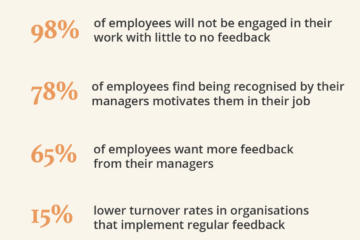Progressive Behaviour Capture in Performance Reviews
Traditional performance reviews can often feel like a snapshot in time, capturing an employee’s performance based on past events. However, progressive behaviour capture—a method of continuously monitoring and documenting employee behaviour—offers a dynamic alternative that can significantly enhance the review process.
1. Real-Time Insights
Progressive behaviour capture provides leaders with real-time insights into an employee’s performance and behaviour. Unlike annual reviews, which might only reflect a small segment of an employee’s work, this approach allows leaders to track behaviours and performance patterns over time. This continuous feedback loop ensures that assessments are based on a comprehensive view of an employee’s work and interactions.
2. Enhanced Objectivity
By documenting behaviour consistently, leaders can minimise biases that might affect performance evaluations. This method offers a more objective perspective, as feedback is based on actual observed behaviours rather than recollections or subjective impressions. This objectivity can lead to fairer assessments and more accurate evaluations of an employee’s strengths and areas for improvement.
3. Improved Employee Development
Progressive behaviour capture supports more personalised development plans. With ongoing documentation, leaders can identify trends and provide targeted feedback. This allows employees to address issues as they arise and work on specific skills or behaviours, rather than waiting for a yearly review to receive actionable insights. This approach can lead to faster improvement and greater overall development.
4. Increased Engagement
When employees receive regular feedback, they are more likely to feel valued and engaged. Progressive behaviour capture facilitates ongoing communication between leaders and team members, fostering a culture of transparency and continuous improvement. Employees are more aware of how their actions impact their performance and can adjust their behaviour in real time, leading to higher engagement and motivation.
5. Data-Driven Decision Making
Having a central location of documented behaviour provides a rich data source for making informed decisions. Leaders can analyse trends and patterns to make data-driven decisions regarding employee development and progression. This approach ensures that decisions are based on comprehensive evidence rather than isolated incidents.
Incorporating progressive behaviour capture into performance reviews is a step towards creating a more responsive, fair, and development-focused work environment. By capturing behaviour progressively, leaders can provide more accurate, meaningful feedback and support their team members in reaching their full potential.
Want to learn more about Eclipse?




0 Comments